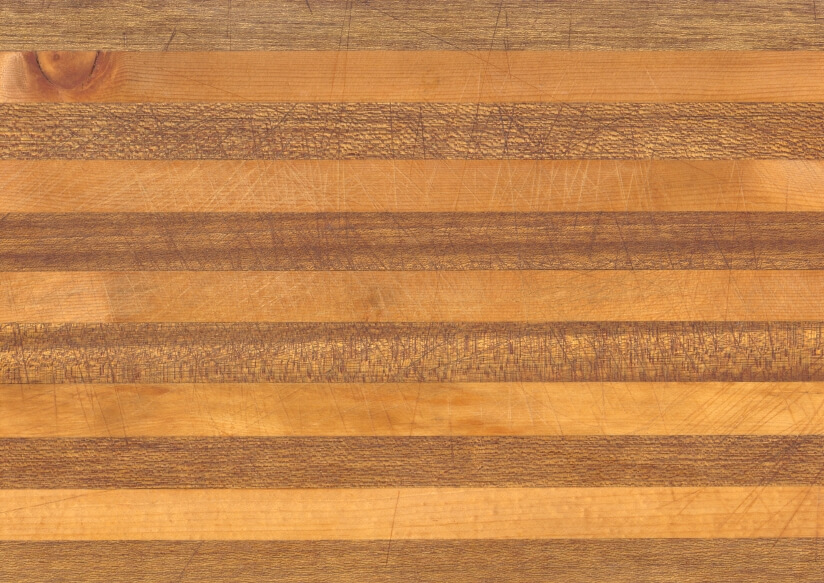Renovating a kitchen area is a project that requires numerous decisions. One of the critical decisions is the material for your new countertops. Butcher block countertops are a good choice because they provide a warm, homey look to any kitchen décor and will last for many years.
The History of Butcher Block
Wood surfaces have been used as work surfaces since the dawn of humankind. The split trunks from large trees made a good material for table surfaces for blacksmithing, butchering and other tasks. Generally, these surfaces were untreated and soon became worn, cut and unsafe to use around food products. In the 1800s, a number of manufacturers recognized the need for a more aesthetic, easy-to-maintain wood surface and designed the butcher block wood surface. The design assembles pieces of solid wood into a solid piece that is durable, serviceable and attractive.
How Butcher Block Countertops Are Made
A number of different types of wood can be used for butcher block countertops. Maple, walnut and teak are commonly used, but cherry, ash, oak and other types are also popular. The strips of thick wood are glued together to create a hard, solid surface that stands up to common kitchen tasks. A variety of different edgings can be incorporated into the countertops to provide an aesthetically pleasing overall design.
Advantages of Butcher Block Countertops
Nothing beats the warmth of a wood surface to create a warm and inviting atmosphere for family meals and entertaining. Butcher block has a neat and functional look that makes a kitchen an enjoyable place to linger. Butcher block is also affordable and can help your renovation budget go further. A variety of different wood grains, stains and construction techniques can be used to fit any type of decorating scheme. Many people do not know that wood helps to reduce bacteria on kitchen cutting surfaces. It can be cleaned easily and only needs monthly oiling to continue to look good. Small cuts and mars can be sanded out and the surface refinished to make it look like new again.
Maintenance of Butcher Block Countertops
Maintaining butcher block surfaces is easier than many people think. Regular soap and water washing will remove food particles, odors and common stains. Manufacturers of these countertops generally seal the surface before installation. Often, polyurethane or other sealers are used around the sink and other areas that experience frequent moisture. They recommend oiling the surface to nourish the wood on a monthly basis. Generally, a food-grade mineral oil is advised for this purpose. However, you can find a number of wood countertop products on the market for moisturizing and sanitizing butcher block wood countertops.

